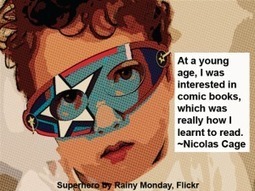by Shelly Terrell
"Comics can be powerful learning tools. The mix of art, dialogue, character expressions, and frames engages learners and is brain-friendly. Moreover, comics break down a story’s plot and text into bite-sized chunks that are supported with visuals. This is much easier for our brain to process than reading a large amount of text on a page. Additionally, comics are an effective way to introduce your learners to digital storytelling. Many of the comic creation tools are easy to use allowing the learners to fill in their frames by clicking on a choice of characters, props, scenes, and more presented to them. Your learners will be able to quickly create a story, view it, and share it with their friends and family. Comics come in many formats and types to support and engage struggling readers as well as advanced readers. Creating comics engages students and encourages them to explore vocabulary, summarize information, and contextualize what they learn in a creative way. Creating comics is also being accepted as an effective way to teach complicated writing. Nick Sousanis, a doctoral candidate at Teachers College, Columbia University, wrote his PhD dissertation entirely in comic book form. View examples of his work on his blog, Spin, Weave and Cut. The following tips and free resources will help you engage learners with comics."
Via
Jim Lerman



 Your new post is loading...
Your new post is loading...

![Complex Content? Chunk It Like This [Infographic] | Nonprofit Capacity Building and Training | Scoop.it](https://img.scoop.it/NQ5htRdkHzloOosVJNciSTl72eJkfbmt4t8yenImKBVvK0kTmF0xjctABnaLJIm9)









Interesante. Pienso que, de algún modo, quienes trabajamos con e-learning ya estamos haciendo "chunking" hace tiempo.